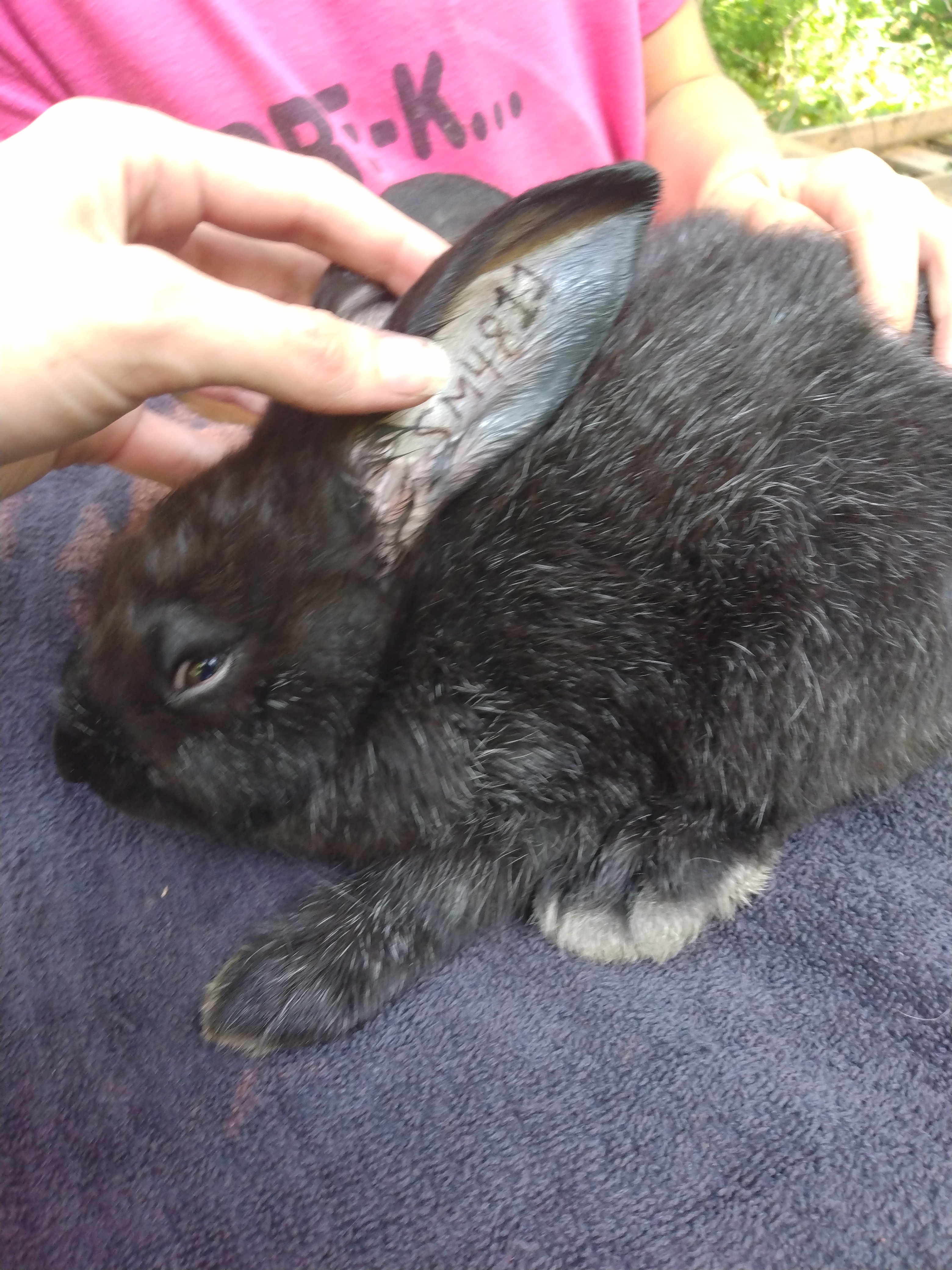Our TB Tatt tattoo pen arrived last week from all things bunnies! I can do a specific review post about that later. What I wanna talk about today is my system for rabbit record keeping!

My oldest and I (he’s an ARBA Jr member! …which mostly means that his membership inspired him to actually want to help me with the bunnies and take ownership in the homestead) got 3 of the baby bunnies tattooed. They’re around 8 weeks old, so that is the ideal time because their ears are a bit softer and the cartilage hasn’t hardened too much.
He held and comforted them in a bunny wrap while I cleaned their ears, applied numbing spray, inked the pen, and did the tattooing. I will have to go back and get pictures of our set up, because it worked really well! I expected there to be a learning curve, but it was super easy.

For the labeling, I had been reading the ARBA guidebook, and surfing blogs on rabbit tattoos, and I think I hit the middle of the road on complexity or intricacy.

So here’s my system and why I settled on it:

Example: SM1222
The letters
First, the letters, SM stand for our rabbitry, Shaggy Maple. Every rabbit born on our homestead has this prefix.
The Numbers
The first two digits, in this example, tell me who the bunny’s parents were. Our buck Helmer is SM001, as he is our foundation buck. If he had been tattooed or had an ear tag when we bought him, we would have used that. Since he did not, and he was our first silver fox rabbit, we started with 001. The 1 in the tattoo SM1222 stands for Helmer as sire. The 2nd digit, in this example, a 2 stands for Heather as dam. If she had been tattooed or marked when we bought her, we would have used that number, but, as she was not, and she was the first silver fox doe we bred, we chose SM002 as her ear number. The 2 in SM1222 represents Heather as dam. You get the idea.
The third digit tells me the litter number. In this example, I can learn from the ear ID that this bun, SM1222 was in the 2nd litter born to Helmer and Heather. All bunnies from this litter share this digit in common.
The fourth digit tells me sex, and weight. For the males, the final digit is an odd number, for the females, the final digit is an even number. In our example, SM1222 was the smallest female of Helmer and Heather’s 2nd litter, smaller than her sister, SM1224. Are you tracking with me?

By utilizing this system, we as breeders as well as potential buyers can gather much useful information, just by looking at the ID. Where did this buck or doe come from? Who were it’s sire and dam? How many litters did the doe have before this one came along? Is it a male or female? Was it the runt of the litter? And that is not even counting what can be learned by looking at the rabbit in person to guage coat, eyes, size, weight, structure, form, etc. This is very useful when deciding whether or not to breed two rabbits. By looking at the numbers, I can see how closely related the rabbits are. I would not, for example, breed SM1222 with SM1221, because they are litter mates. I would not breed SM1222 with SM1211 because while they are not litter mates, they have the same parents. I COULD however breed SM1222 to SM4811 because they are not closely related. But it’s especially useful if you’re looking to increase weight for meat production,- I can pair the two largest buns from the appropriate litters and ensure that we are maintaining quality stock.

This way, I have a neat, organized system by which I can keep track of all these buns that all start to look alike to me after a while, and the pedigrees are much simpler this way.



